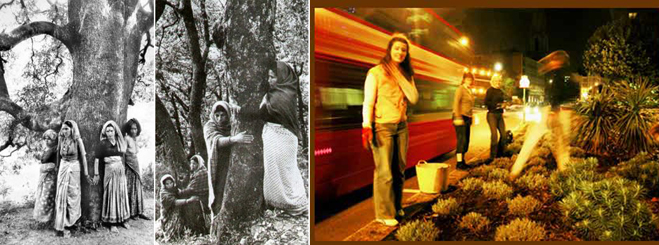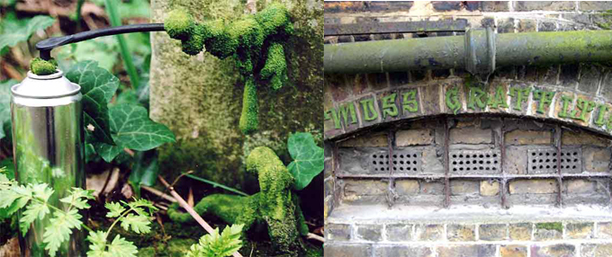Urban Permaculture: Guerrilla Gardening
These notes form a part of sanjeev_shankar's research, which is summarised in his research report
Guerrilla Gardening: Europe and India
Guerrilla gardening as a method and concept of revegetating abandoned spaces is very effective in western cities. It is a show of resistance and also a cultural focus. In India, such practises are seen everywhere and as such are not in an 'activist' mode since the act of planting has deep religious and spiritual significance. However, the most remarkable movement with strong activist undertone was the Chipko Movement, which continues to be of significance in contemporary India.1)2) In cities, migrant and poor population is often seen growing their nutritional requirements under flyovers, on river banks, next to fences and adjacent to railway tracks in Bombay. There is little regulation against such activities, though the trend of dislocating migrants will impact such activities. Contrary to this, guerrilla gardening has become an active method of involving communities to contribute to the green vision of a city in the west. Numerous vacant plots have been converted into fertile productive landscapes.3)4)5)The question which still remains unanswered for the researcher is, how can the act of planting be considered illegal ?6)
Seed Balling
A simple and effective method for re-vegetation of degraded landscapes, particularly in semi arid areas is seedballing. To make seedballs we need seeds, compost, clay and water. For rehabilitation purposes, native seeds are mixed together and then, in the correct proportions the seed blend, humus, clay and water are mixed and rolled into small (1 cm or half-inch diameter) clay balls. Seed balls can be made either by hand or by simple machine, depending on labour availability.7)Although not all seedlings within a seed ball will survive to maturity, the appropriate species for each micro location will be there to survive. The clay coating protects the seeds from excess sun, heat, wind, water and pests, while the compost inoculates the soil with beneficial organisms and gives the seeds an extra boost when sprouting time comes. One of the strongest features of this method is that seedballs are simply scattered about the site you wish to re-vegetate, hence avoiding the act of digging. Further the balls absorb moisture from the ground, the dew and the rain and will sprout when conditions are right. The most suitable sites for ‘seed balling’ are those free from thick grasses. Seed balls are part of a wider philosophy known as natural farming. Learning from Fukuoka Masanobu, a farmer Panaiotis Manikis has pioneered this approach in Greece, leading a project to re-vegetate barren hills, mountains and deserts as part of wider effort to create a 'Greenbelt for southern Europe' - a green barrier from Portugal up to Iran-Iraq to stop desertification and recreate fertile soils.8)
For more details please click on the following link: theseedballmethod.pdf
Moss Graffitti
A simple and effective concoction to encourage moss growth.9)The recipe consists of 1 can of beer, 1/2 teaspoon sugar and several clumps garden moss. We would also need a plastic container (with lid), a blender and a paintbrush. To begin with, first of all gather together several clumps of moss and crumble them into a blender. Then add the beer and sugar and blend just long enough to create a smooth, creamy consistency. Now pour the mixture into a plastic container and create some living graffiti. Paint your chosen design on any shaded, damp vertical or horizontal surface. Porous, moisture-retentive surfaces work best (brick, wood, coarse concrete). Soon the bits of blended moss should begin to re-couperate into a whole rooted plant, eventually colonising the whole area.10)



